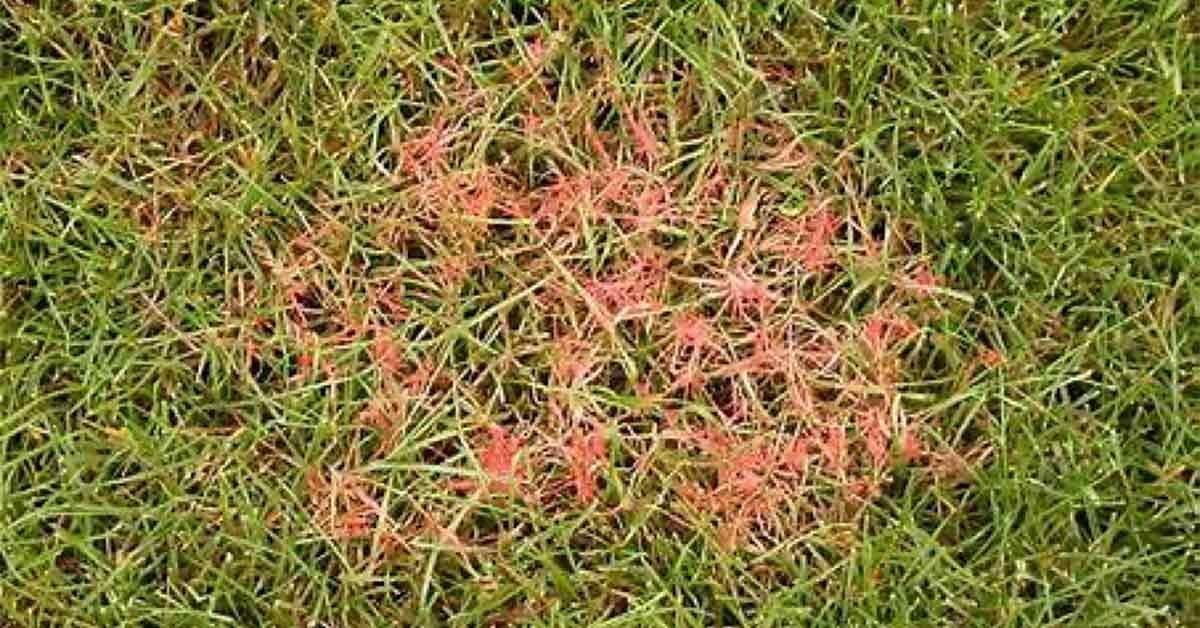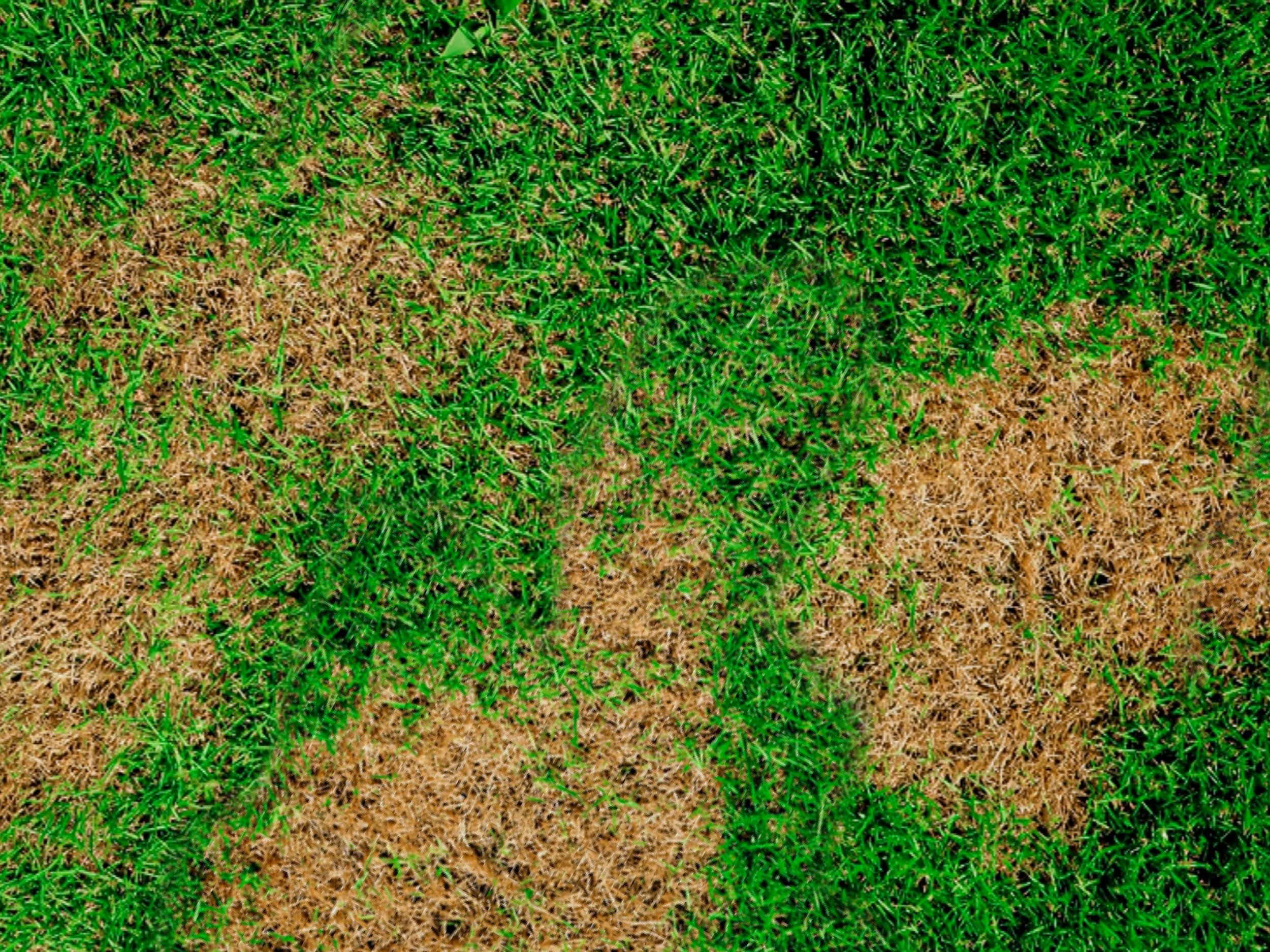Protecting Your Yard From Turf Fungus
There’s a Fungus Amungus:
There are three common types of fungi in the Roanoke region; Red Thread, Dollar Spot, and Brown Patch. Being able to identify the beginning stages of these fungi could be the difference between a summer of healthy green turf, or a large re-investment in seed or sod come September. Why September? That’s the best month for reseeding as it gives your new grass seed or sod a chance to grow sturdy roots before the cold of winter and reduces the risk of hot temperatures baking the seed or sod.
If you don’t have a lawn care professional looking after your property, catching the warning signs of these fungi can go unnoticed, often until it’s too late. Not to worry! We don’t believe in gatekeeping trade secrets. Our professionals will gladly share their education on tough yard issues. We’re here to help you identify the issue, understand the issue, and teach you how to combat the problem once confirmed in your yard.
In fact, as I write this article, our team of turf professionals are right down the hall discussing where we’re seeing fungi and delegating tasks to ramp up localized treatment. It’s of no surprise to us that we’re seeing an influx of fungi in the region. Our weather has had all three favored conditions for each of these common turf fungi in the previous 15 days. Intense heat, high humidity, cool nights, warm days, and heavy dew make the perfect environment for the trifecta of lawn fungi.
Dollar Spot (Sclerotinia homeocarp)
About the size of a Silver Dollar, Dollar Spot is a common turf fungus in Virginia. What begins as small, round brown or tan patches in the grass can grow, and when left untreated, run together, creating large areas of dead turf. Worse, if you don’t know what this fungus looks like and you, your kids, or your pets walk through and across the lawn, the fungus is picked up and will spread. Once this fungus takes hold throughout the yard, it’s almost certain you’ll need to re-seed in September as the disease kills the entire grass plant.
Red Thread (Laetisaria fuciformis)
Red thread, a fungus you’ll see most commonly in spring, can be identified if you’re looking out for pinkish, straw-like patches in your lawn. The best time to try to identify this fungus is in the early mornings, while dew still rests on the turf. The fungus will present itself at the top of the grass stem, killing the blade from the top down. Unlike Dollar spot, red thread isn’t spherical, and grows in irregular patches. Red thread doesn’t spread through spores, but instead is most likely in your yard already, just waiting for conditions to turn favorable before making its presence known. Out of any of the three fungi we’re discussing this week, red thread is the least devastating for a lawn. While it turns patches of your turf brown, with the tell-tale red along the top of the grass blades, it usually goes dormant once fall temperatures return.
Brown Patch (Rhizoctonia solani)
Rhizoctonia solani, or better known by its common name “Brown Patch”, is a moisture-loving fungus that you might see popping up in your yard after humid, hot weeks with bouts of rain. This specific fungus is a real doozy. Discoloration in the turf will happen rapidly. Seemingly overnight, patches of grass will turn yellow and begin to spread. While dollar spot and brown spot are fairly circular, brown patch has more of an irregular shape to it and most likely won’t begin as a silver dollar sized circle.
What causes Lawn Fungi?
While there are a few differences in what causes brown patch, dollar spot, and red thread to pop up in your yard, there are also several key similarities. Addressing the following similarities will better protect your lawn from not just fungi, but also heat stress.
Poor Lawn Health: If you’re not maintaining your lawn by cutting regularly to a proper height, fertilizing, and watering correctly, your lawn becomes more prone to disease.
Watering Incorrectly: If you’re watering in the evening, stop. The blades of grass need time to dry off and evaporate in the sun before night falls. If your grass blades are wet for too long it creates the perfect environment for turf fungi to show its ugly mug. Try to water in the mornings, water deeply rather than frequently, and make sure the roots are adequately watered without allowing the grass leaves to remain wet for long durations.
Differences between the three:
Red Thread: Cool, wet weather with overcast skies can catalyze the growth or awaken the fungus, and if conditions continue, allow red thread to thrive. These conditions make this fungus most common in spring, but can still enter a heavily shaded yard with moist conditions in the summer months.
Brown Patch: Where Red Thread takes off after cool wet weather, Brown Patch is catalyzed by hot humid weather. Knowing the difference allows you, the homeowner, to narrow your focus when you’re patrolling your turf depending upon the weather we’re currently experiencing.
Dollar Spot: This fungus rounds out the opposing Red Thread and Brown Patch conditions. Favoring temperatures between 60-90 °F with warm days, cool nights, and heavy dew.
How to Combat Turf Fungi:
Apply a Nitrogen Fertilizer in Early Spring: The healthier your grass going into hot summer months, the more likely you won’t see any fungi. If a fungi does appear, a healthy lawn helps to limit the severity of the issue.
Water Early & Well: If you have irrigation, set your system to run in the mornings. Then, make sure your grass isn’t sitting wet for hours afterwards. In shady or semi-shady areas that may not get sun dried sufficiently, it’s worth considering mowing after watering to cut the excess moisture or dew off of the blades of grass.
Catch the Fungi Early: Pay close attention to your turf to identify the fungi as early as possible. A watchful eye will catch changes in grass color and texture, giving you an opportunity to stop the spread.
Apply Fungicide: If you discover fungi in your yard, there are plenty of fungicides that work great to combat the lethality of fungi.
If you don’t feel confident applying a fungicide yourself, don’t hesitate to reach out. We have three experienced and educated professionals who would be happy to help.
So… if you’re barbecuing with friends and family and you notice an ugly patch of grass, now you know what actions to take and/or who to call. Hopefully, you and your family will enjoy a green, healthy lawn all summer long without running into any issues or concerns. If that’s the case, send us some pictures of how you use & enjoy your outdoor living spaces! We’d love to share some of your summer joy.
~RL



